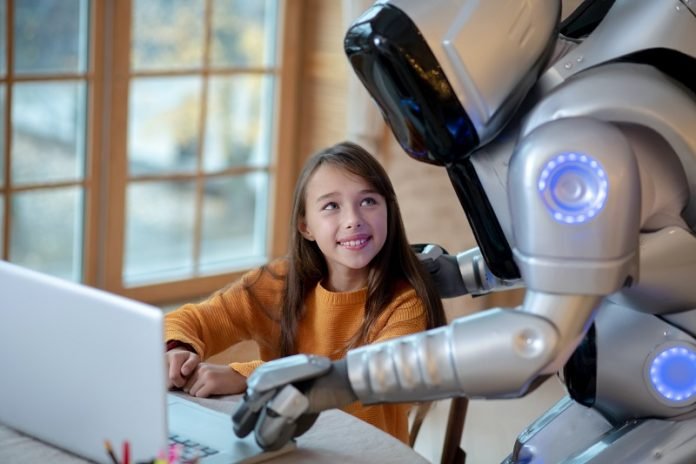
Infinigen is a cool new invention by engineers at Princeton University, who have developed a way to train robots and other machines to understand the world better, visually.
Currently, artificial intelligence (AI) systems can be limited when it comes to creating realistic, varied images for machines to learn from.
But this new program, Infinigen, might just be the solution!
The unique part about Infinigen is that it uses mathematics to create digital images.
You might wonder how math is related to image creation, but just like it plays a role in things like video games or CGI movies, it can help create detailed and lifelike images for computer systems.
Infinigen creates a bunch of 3D images using randomized mathematical rules.
When it comes to training computers to understand the world visually, the labels given to different objects in an image are super important.
Just like how we, humans, label things in our mind like a “tree,” “car,” or “cat,” the computers need similar labels to understand what they’re seeing.
And that’s where Infinigen shines. The program makes a 3D world, adds objects to it, and then captures an image, all while automatically labeling each object and noting its location.
So, if a robot was trained using these automatically labeled images, it could learn to recognize and locate different objects in real life, using just an image.
That’s pretty cool, right? And to make things even better, those using Infinigen can adjust the system’s settings to perfect the lighting or viewing angle of the images, making them even more realistic.
Infinigen is not just about making objects, it can also create virtual versions of natural events like rain, snow, or fire. The creators of Infinigen see it as being useful for a lot more than just training robots.
They think it could be used for virtual reality, video games, films, 3D printing, and other digital content creation.
To make Infinigen, the team started with something called Blender, a free-to-use system that’s been around since the 90s, used to create computer graphics. Keeping the same spirit, they’ve made Infinigen free for anyone to use.
Infinigen also has an advantage because it can help machines understand complex 3D spaces, from just 2D pixels, like those in the world they’ll operate.
Even though we humans see images as 3D, computers see them as just flat, 2D collections of pixels. Infinigen makes it easy for computers to understand 3D images from the ground up, which is a pretty big deal.
Infinigen comes with subprograms, called generators, that are specialized in creating specific types of objects like “fish” or “mountains.” You can adjust the size, texture, color, and shine of these objects to make them as realistic as you want.
The creators of Infinigen want it to be a collaborative tool, meaning they hope people will add more features and capabilities to it over time.
They dream that Infinigen becomes the first choice for anyone needing images to train computer vision systems, and a tool that everyone can contribute to and benefit from.
Follow us on Twitter for more articles about this topic.



